Genocide committed by the Khmer Rouge in the mid-1970s sought to destroy the Cambodian identity for half a decade. More than two million lives were lost, and with them, records, photos and cultural artifacts disappeared. Before the Khmer Rouge came to power under revolutionary leader Pol Pot, Cambodia enjoyed a full-fledged music scene, complete with its own rock stars who'd balance Cambodian traditions with ideals of the West to create a type of music like no other. After a decade of research, a new documentary, "Don't Think I've Forgotten," attempts to resurrect the vestiges of a decimated part of Cambodian popular culture.
For filmmaker John Pirozzi, it began with hearing the few poorly catalogued tracks that were passed around as collectors' items. After interviewing more than 80 people, receiving never-released archival footage from Cambodia's former king, tracking down almost 1000 CDs, cassettes and vinyl records and collaborating with other collectors and independent researchers, "Don't Think I've Forgotten" patches together the vibrant, fraught history of the Cambodian rock and roll scene.
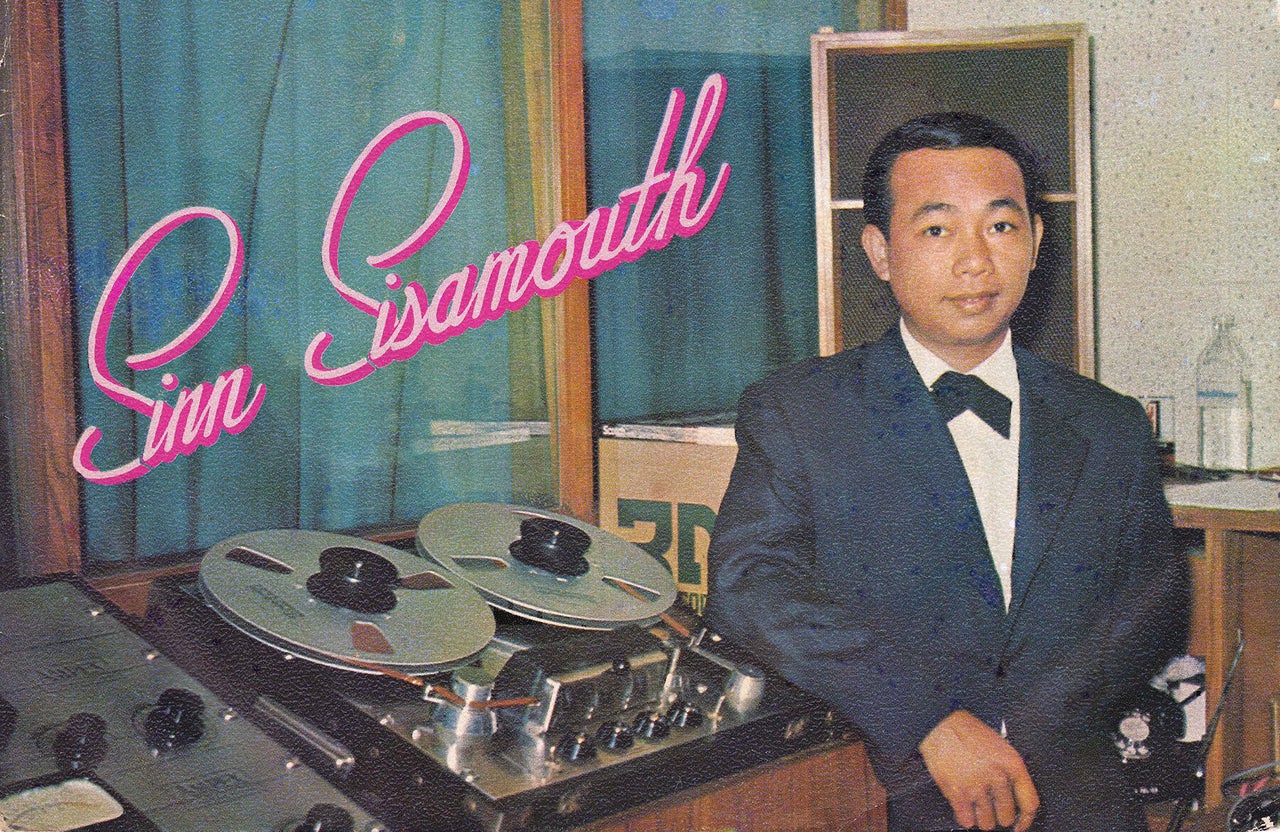
According to Pirozzi, it's generally believed that certain instruments first came to Cambodia under King Norodom Suramarit, who wanted a grand marching band like the neighboring Philippines. During his rule, he imported trumpets and tubas, and invited the Filipino marching band to instruct Cambodians. Suramarit further encouraged the country to consider Western and classical composition at music academia.
"Don't Think I've Forgotten" deeply explores the 1950s Cambodian government's eventual takeover by Suramarit's son, Prince Norodom Sihanouk. He heavily promoted Western-influenced culture within the country, singing Western-influenced songs and creating Bollywood-esque movies with extensive musical numbers that enlisted Cambodia's most influential musicians. Songs promoted on the national radio station straddled glorification of the capital city Phnom Penh and, over time, rock and roll. Western rock entered the country slowly. Cambodian diplomats returned from their travels, to France and the United States, bringing with them a few records. A tight-knit community in the burgeoning music scene embraced the new sound. "Cambodia is a small country, certainly then," said Pirozzi. "So everyone knew everyone, certainly in the music scene. There was a really strong connection between everyone."
Musicians Sinn Sisamouth and Ros Serey Sothea became stars as they incorporated Western styles with old tradition to create a new, Cambodian version of rock. Pirozzi discovered that Sisamouth was initially worried recording music would ruin his career because nobody would come out to see him sing live, but the music industry scaled and it paid off for the musician.
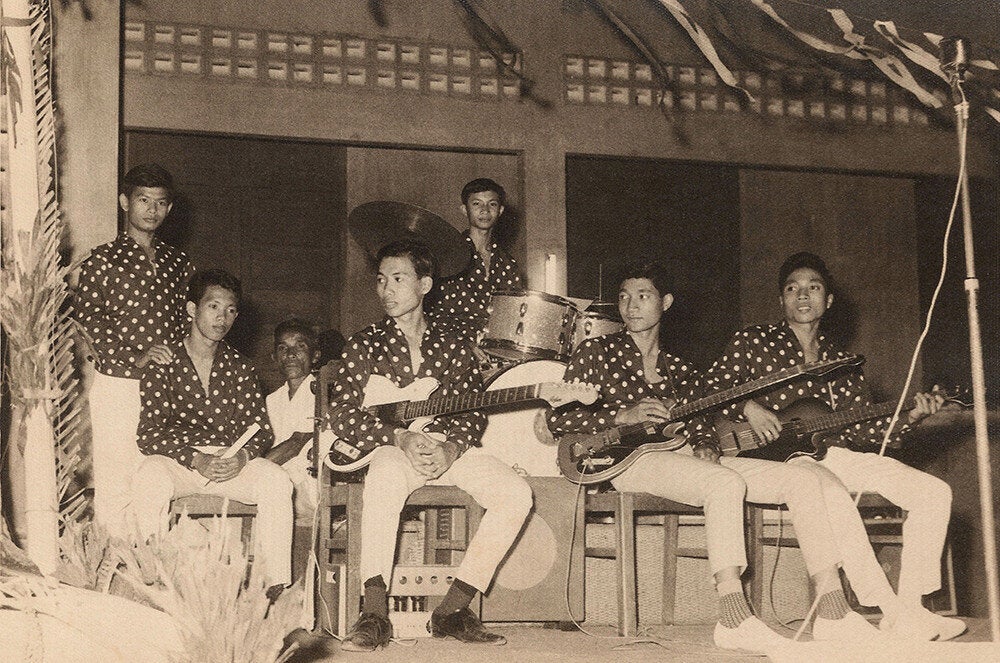
Cambodia first experienced the albums of artists like Perry Como and Pat Boone, which had elaborate orchestrations that were unattainable for reproduction by the nation's teenagers. "But then when they heard the guitar music, they thought that's something we can do," Pirozzi said.
A few guitar shops already existed in the country for the purpose of providing jazz guitars for orchestras, but it wasn't until a group called Baksey Cham Krong came along that there was a true guitar band in Cambodia. One of the members, Mol Kagnol, told Pirozzi that when he was about 9 years old, in 1954, his older brother got an electric guitar and amp at an electronics store. Kagnol realized he could already play guitar due to its similarities to an accordion.
The kids that made up Baksey Cham Krung came from wealth, allowing them to acquire the instruments they needed to enrich Cambodia's rock scene. Even still, bass guitars had not yet arrived in the country, and so they had to get creative. "At that time, they didn't have any bass guitars imported, so what they did, I believe, they ripped the strings off a cello and then they tied those to a guitar, to make their own bass guitar," explained music collector Nate Hun, who collaborated with Pirozzi.
Although the early Cambodian rock scene was most easily accessed by those from wealthy families, there were exceptions. Ros Serey Sothea was one of the biggest stars of the Cambodian scene and she'd come from living on a very poor farm. As the industry took off, Sothea and her frequent collaborator, Sisamouth, were paid top dollar.
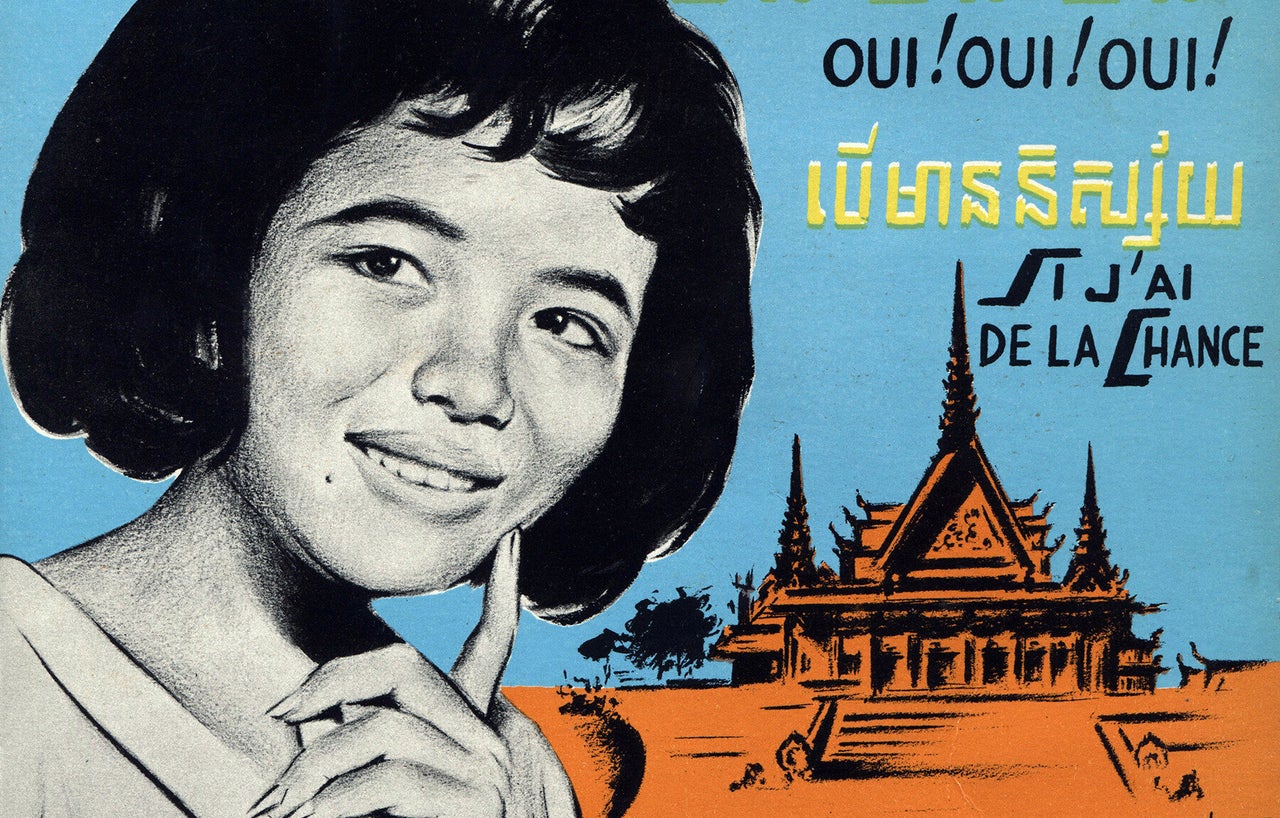
For "Don't Think I've Forgotten," Pirozzi tried to figure out whether there were elements of political dissent and drug use in the rock scene, but "that didn't exist in Cambodia," he said. At the time, Sihanouk executed communists and didn't allow political opposition. A necessary supporter of the Cambodian music scene, the ruler's political views bled into the music. Opposed to the Western scenes, Cambodian rock reflected a culture that did not openly protest its government and therefore had a very unique lyrical subject matter.
As with most music movements, themes of sex still played into the Cambodian music. "It is very subtle, but there are very sexual songs in there." Hun spoke to a particular Sothea song in which she sings about being concerned her mother will discover that her boyfriend broke her water jar -- a metaphor for losing her virginity. After Sothea, artists such as Yol Aularong, Pen Ran and Meas Samon introduced more sexual liberation into the scene.
Drawing French influence, the lyrics contained a heavy sarcasm and playfulness that mixed with the Cambodian tradition. Aularong, the nephew of one of Cambodia's best violinists, Has Salon, would become the rock scene's "badass" as Pirozzi explained.
In the documentary, Aularong, cited as speaking to the prince, says, "You’re a prince, I’m not, but we will all die so who cares, let’s have a drink." Despite falling in line with the Cambodian politics of the day, the songs still had a social rebellious tone that was uniquely informed by the heaps of classical training the government provided. Unfortunately, Aularong was one of the last musicians of the scene and when the communists took power. He only survived as a symbol.
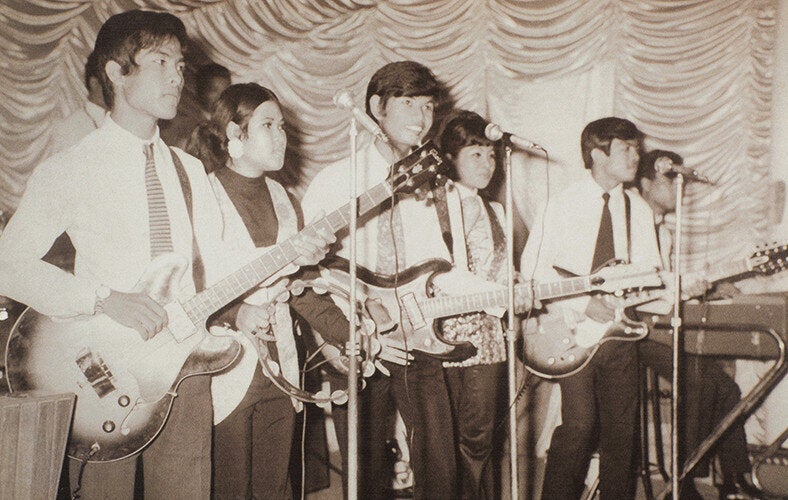
The Communist Party of Kampuchea, otherwise known as the Khmer Rouge, took power in Cambodia in 1975. It quickly forced the population into farming work camps. Fearing death, Musicians such as Aularong had to keep their past a secret from the new regime. It is unclear what happened to Aularong, but his name survived as a sort of codeword for the younger Cambodians to identify themselves as a way of keeping their culture alive. As Pirozzi explained, the Cambodian citizens were forced to work 12 hour days, six days a week. On the seventh day they were subjected to indoctrination classes. Along with executions, much of the country died due to starvation and disease under the Khmer Rouge's infrastructure inadequacies.
The period was known as the "Killing Fields" era, during which approximately two million Cambodians died. In 1995, the Documentation Center of Cambodia was founded in an attempt to resurrect the lost history. Through extensive interviews with survivors, photographs and other records thought to be lost are now archived in the center in keeping with the its "quest for memory and justice" for the Cambodia lost in the mid-'70s.
John Pirozzi was able to work with the center as a sort of starting point. "This idea of identity and having your identity completely taken away from you and then your entire country is destroyed, ground down to nothing and then you come back to it and you have to start over again and create a whole new identity," he said. Using the center's resources and early interviews among the large Cambodian population of Long Beach, California, Pirozzi was able to piece together what he would need for a history of the "forgotten" music culture.
Nate Hun, who had been independently trying to collect Cambodian music since childhood and had successfully convinced various people in the Cambodian community to sell him their old records in exchange for digital copies, eventually teamed up with Pirozzi. "Most Cambodians are really reluctant to talk about that time because it brings back bad memories," Hun explained. The research for "Don't Think I've Forgotten" came together over the course of a decade.
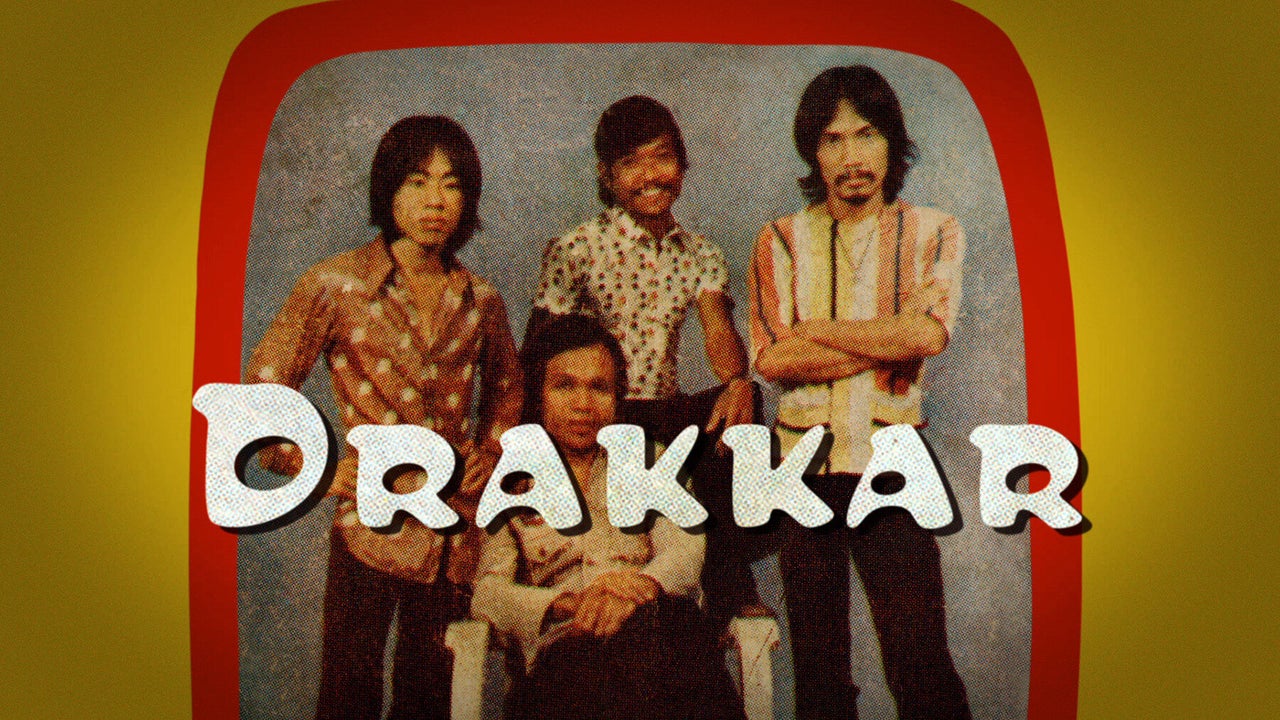
Along with the premiere of the documentary, members of Baksey Cham Krung and another rock band, Drakkar, have reunited to play in New York City. The bands will embark upon a brief tour in the U.S. in support of the movie and a recently released soundtrack, now available at Dust to Digital.
"Don't Think I've Forgotten" received rave reviews from critics, but, more importantly, it has been widely accepted by the Cambodian community as a worthy representation of something thought to have been completely destroyed. What began as a few archived songs with nonexistent liner notes is now well documented.
"The music made it through and the music is still alive," said Pirozzi. And through the music, an identity survives.
